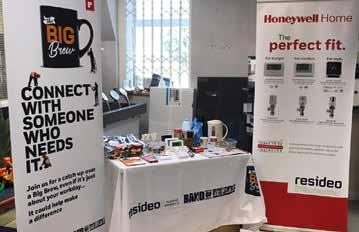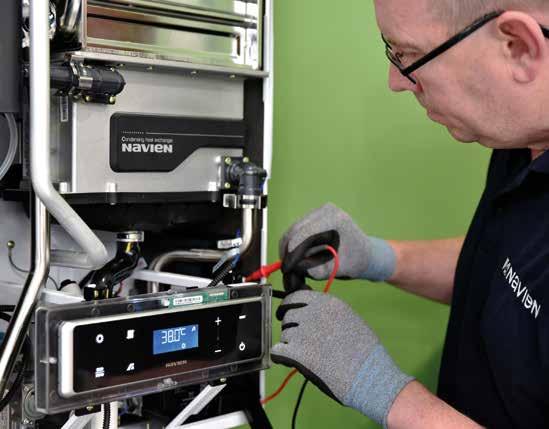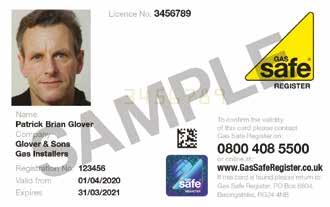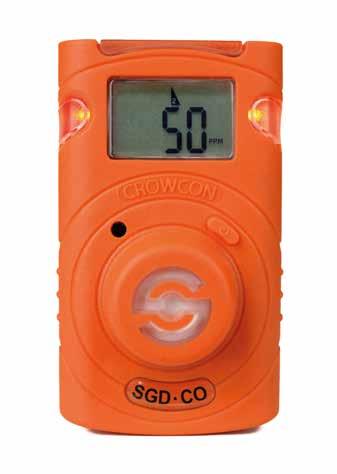
4 minute read
Technical
Protecting homes in cold weather
Sub-zero temperatures, ice, snow and wind can all have devastating consequences on homes. Gas Safe Register’s Technical Support Officer Steve Lombard has some advice on minimising the expense and inconvenience of winter damage.
Protect the boiler and heating system
Older non-condensing boiler installations in unheated spaces, such as a garage, outhouse or loft space, rely on good insulation of pipework, cold water storage (CWS) and feed and expansion (F&E) tanks. The boilers themselves often need additional frost thermostats and pipe thermostats: these override the normal heating controls and fire up the boiler in the coldest of temperatures. Some boilers also have a spring-loaded safety valve screwed into the cast-iron heat exchanger to relieve the expanding pressure on the boiler if the cold feed and vent pipe should become frozen.
What about modern heating installations?
Many heating systems use combi or system boilers, and system boilers usually heat an unvented hot water cylinder, which means that CWS, F&E tanks and pipework in roof spaces are a thing of the past. Modern boilers have built-in frost
Protecting homes in cold weather
protection instead of relying on external controls.
It’s important to insulate all exposed pipework in unheated spaces, but the most likely cause of damage to a modern boiler in sub-zero temperatures will be a frozen condensate pipe that has been run externally.
When the condense pipe freezes, condensate backs up inside the boiler causing damage that could lead to expensive repairs.

External condensate drains
You should only consider fitting an external condensate drain connection if internal gravity or pumped connection is impractical to install.
Where the condensate has to be run to an external drain, make sure you follow the manufacturer’s instructions and BS 6798*, which require the condense pipe to be run internally as far as possible before going outside. The pipe diameter must be increased to a minimum of 30mm ID (typically 32mm OD) before it passes through the wall.
The angle of the pipe should slope downwards by at least 3° as it passes through the wall to help maintain a good velocity as the condensate exits the building.
The external pipe run should be kept as short as possible, to a maximum of 3 metres, taking the most direct and most vertical route to the discharge point. There should be no horizontal sections in which condensate might collect.
To minimise the effects of wind-chill, the open end of the condensate pipe should terminate below the grating and above the water level. It should also be covered by a drain cover, such as those used to prevent blockage by leaves.
The pipe must be insulated from the point where it emerges from outside the external wall of the building, using suitable waterproof and weatherproof insulation.
Alternative methods of protection may be used, as specified by manufacturers, and products such as those that preheat the condense before it leaves the thermal envelope of the dwelling can be used too. Remember: When installing a boiler, any horizontal flue exiting the property needs to be installed at least 300mm above flat surfaces to avoid becoming blocked by snow or leaves.
*BS 6798: Specification for selection, installation, inspection, commissioning, servicing and maintenance of gas fired boilers of rated input not exceeding 70kW net
Preventing damage caused by freezing
Outside taps: Use a suitable insulating cover to protect the outside tap from wind-chill and freezing conditions. It’s also a good idea to fit an additional isolation valve inside the property before the outside tap. Holidays: Homes that are left empty during the winter can be protected from freezing by a number of measures: • Add antifreeze to the central heating system: this is especially useful in properties such as residential park homes or holiday homes. • Leave the central heating switched on and set the room thermostat to a low temperature setting • If the loft space has cold water storage and feed and expansion tanks, and you are concerned about freezing in a prolonged period of sub-zero temperatures, open the loft hatch slightly at one end to allow some heat to circulate into the loft.
Top tips to protect the home
Insulation: prevention is better than cure There are many good reasons for insulating the home, including insulating the water pipework in unheated or exposed areas. For a low initial outlay, insulation will save on energy and reduce heating costs, and help to reduce the impact of greenhouse gases. Insulating water pipework prevents the likelihood of freezing in prolonged cold periods.
Damage to property – including heating systems – can happen when pipes initially become frozen or when the temperatures rise again and damaged frozen pipework thaws out to expose leaks.
Make sure your customers know where their pipes are and how to shut the water off. When pipes freeze, speed is critical: the quicker the water is shut off, the better the chance of preventing serious damage. Make sure gas appliances are serviced every year in accordance with the appliance manufacturer’s instructions. This helps to ensure that they operate safely and helps prevent breakdowns at the time when they are needed most.







